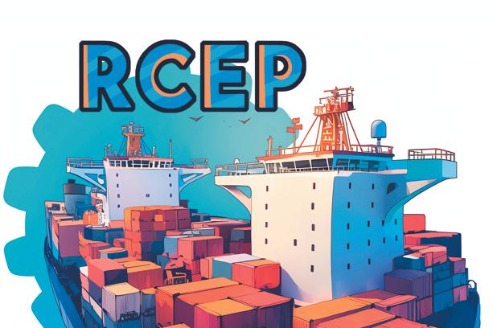Better management of tensions advocated
China needs to step up its efforts in response to the Trump administration's scaling up of US interference in the South China Sea


Three months into Donald Trump's second term, his administration's aggressive pursuit of "America First" policies marked by protectionism, nationalism and unilateralism — has sent shock waves across the world. Nowhere is this more evident than in the South China Sea, where the already volatile situation faces new uncertainties.
As great power competition over maritime strategy becomes a defining feature of China-US relations, Trump's return to office is unlikely to scale back US diplomatic and military engagement in the region. Instead, his administration is expected to double down on efforts to suppress and contain China's sovereignty over islands and reefs, as well as its maritime rights and interests in the South China Sea.
Washington's growing involvement in the region risks accelerating the emergence of a "new Cold War" dynamic, making its South China Sea strategy one of the key pillars of its broader "Indo-Pacific "approach.
US Defense Secretary Pete Hegseth has just completed his first trip to Asia as part of his defense diplomacy push, with Japan and the Philippines as his first two stops. In Tokyo, he underscored the need for the US-Japan military alliance to serve as a strong deterrent against China, while calling for an expanded defense mandate to justify deeper intervention in the Taiwan question, the South China Sea and the East China Sea. In Manila, he vowed continued US support for the Philippines to counter China's "coercive behavior" in the South China Sea. The rhetoric and agenda make clear that the Trump administration is not scaling back its interference in the South China Sea, whether in diplomatic, military or political terms.
Rather, it is doubling down — relying heavily on "minilateral "mechanisms and alliance networks — to entrench US primacy in the "Indo-Pacific", while discrediting China's legitimate claims to Taiwan island and its maritime rights, and casting China's lawful actions to safeguard stability in the region as acts of aggression. For Washington, the ultimate goal is to clear the path for the full implementation of its "Indo-Pacific" strategy.
While Trump's inaugural address in late January offered little detail on his China policy, his administration, positioning China as its primary strategic rival, will maintain a fierce strategy of containment, aimed at stalling and slowing China's development. In the South China Sea, this means a continuation — and possible escalation — of measures designed to counter Chinese influence.
The Trump administration is expected to oversee an expansion of the US' military footprint in the Asia-Pacific, further strengthening the "extended deterrence" strategy from the early post-Cold War era to address the shifting balance of military power between the US and China. Echoing Cold War-era tactics, the Trump administration is likely to ramp up its deployment of intermediate-range missiles in the Asia-Pacific. The Philippines, which has already allowed such deployments on its soil, may see further expansion of US military assets.
At the same time, Washington will continue to portray China's maritime strategy as an attempt to establish a "might makes right "order, aiming to provoke an arms race while stoking regional anxieties about Beijing's intentions. The US will double down on its use of information warfare, cognitive influence operations and ideological confrontation, employing a blend of soft and hard power to try and strategically suppress China. On the military and security front, the US will maintain its military presence in the South China Sea, intervene in China's economic influence in Southeast Asia, and impose legal constraints and international pressure on China through international law and multilateral platforms.
The US is likely to continue supporting claimants of the Association of the Southeast Asian Nations in the South China Sea in their use of the United Nations Convention on the Law of the Sea to challenge China's territorial integrity, pushing for a new "legal battle", "diplomatic war" and "public opinion war".Although many ASEAN members continue to balance their ties between Beijing and Washington, the US remains the primary external backer of countries contesting China's maritime rights. The previous US administration's stance on the issue — exemplified by former secretary of state Antony Blinken's remarks at the annual ASEAN meeting in October 2024, where he denounced China's actions as "unlawful" — will likely persist under Trump's second term.
Washington may also embolden the Philippines to escalate maritime confrontations in waters near Ren'ai Reef, Xianbin Reef and Huangyan Island. Encouraging Manila to conduct "gray zone" operations — covert or ambiguous tactics designed to challenge Chinese positions without triggering outright conflict — could further heighten tensions. These actions aim to coerce more countries to support the distorted narrative of China's "bullying" and "coercive "actions in the South China Sea. This will provide a pretext for the US, Japan, India and some NATO countries to intervene in the disputes.
The Trump administration may also continue to weaponize economic sanctions to intervene in the South China Sea issue. Statistics show that since January 2018, when the Trump administration escalated trade tensions with China, the frequency of US "Freedom of Navigation" operations has been closely linked to the intensity of trade disputes. Specifically, in 2019, US naval "Freedom of Navigation" operations reached a historic high of nine times.
Furthermore, the US has imposed sanctions on Chinese companies and officials involved in developing infrastructure on South China Sea islands.
Despite the Trump administration's continued hardline stance toward China, avoiding direct conflict and confrontation with China remains a priority for the US government. The policy team in the Trump administration is heavily populated with hawkish figures, including Secretary of State Marco Rubio and National Security Advisor Mike Waltz, who have repeatedly pushed for industrial policies targeting China and significant sanctions on Chinese companies in Congress. However, during their confirmation hearings in early January 2025, both acknowledged that preventing an escalation of conflict with China is a fundamental policy option.
In response to the US government's South China Sea policies under the new Trump administration, China should continue to maintain its military deterrence while actively advancing economic, diplomatic and social engagement. China will deepen its cooperation with ASEAN countries, firmly safeguarding its core interests in sovereignty, development and security in the South China Sea. At the same time, it will continue to promote the construction of a maritime community with a shared future, working toward making the South China Sea a sea of peace, friendship and cooperation. China will also push forward the signing and implementation of the Version 3.0 China-ASEAN Free Trade Area and deepen economic and social facilitation measures under the Regional Comprehensive Economic Partnership, enhancing the regional economic win-win framework.
Meanwhile, China should strengthen cooperation with ASEAN countries in port development, digital infrastructure and cultural exchanges through the high-quality building of the Belt and Road. Finally, China should bolster communication and dialogue between governments and militaries with the US, enhance the strategic trust-building mechanism, and promote military exchanges at the theater level. This will help effectively prevent any unforeseen incidents that could lead to military conflict, ensuring that China-US relations continue to evolve into a stable, mature framework for both competition and cooperation, with better management of tensions.

The author is dean of the School of International Studies at Nanjing University. The author contributed this article to China Watch, a think tank powered by China Daily. The views do not necessarily reflect those of China Daily.
Contact the editor at editor@chinawatch.cn.
































